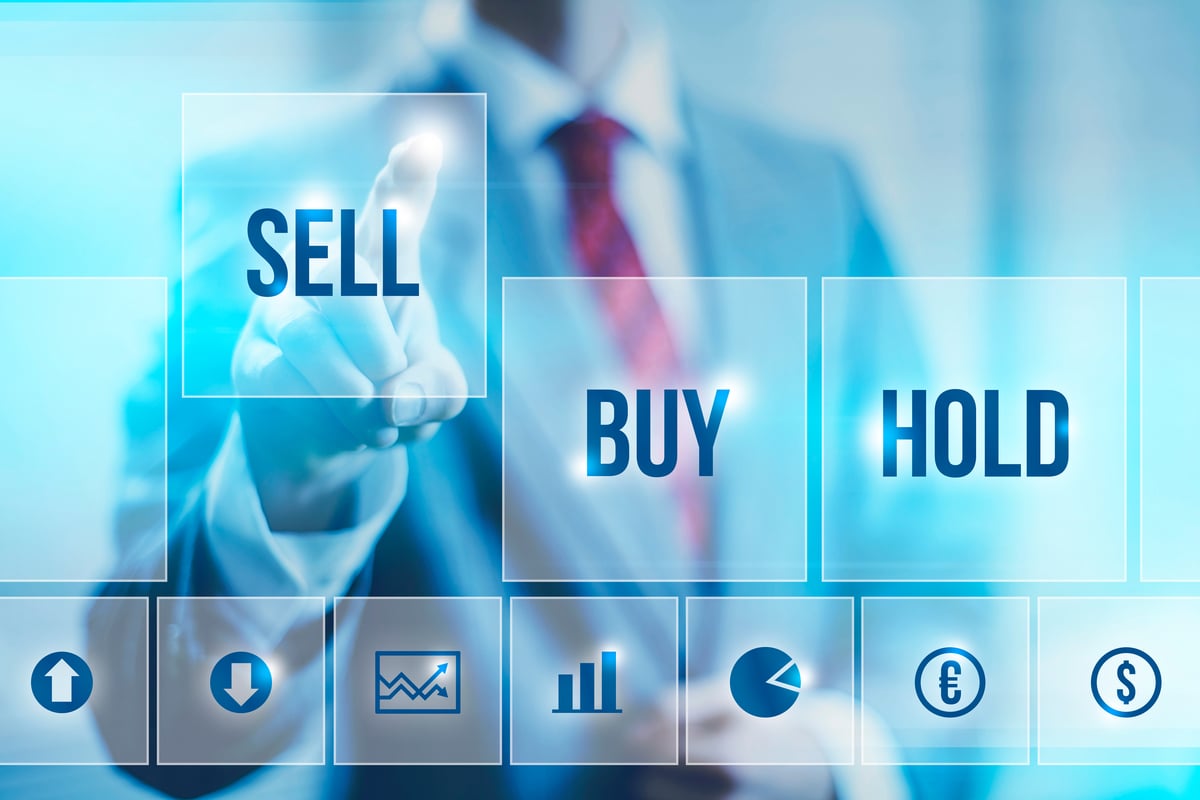AbbVie Inc.'s (ABBV 0.02%) treated shareholders to some hefty dividend bumps since its inception five years ago, but a 35% raise announced in February was the biggest yet. Not long after announcing the payout boost and another $10 billion stock repurchase program, a high-profile clinical trial failure knocked AbbVie's stock down a few pegs.
At recent prices, AbbVie shares offer a nice 4% yield. That's more than twice as much as you'll get from the average dividend-paying stock in the benchmark S&P 500 index. If you're a cautious investor worried about a dividend that looks too good to be true, here's what you need to know about the pillars supporting AbbVie's rapidly rising payouts.

Image source: Getty Images.
On the way down
Humira is the world's best-selling drug at the moment, but it's just a matter of time before biosimilar competition begins chipping away at its share of the rheumatoid arthritis (RA) market. Enough patents have expired to allow the Food and Drug Administration to approve two copycat versions, but additional patent litigation has kept them off the U.S. market. Amgen's (AMGN 0.17%) already agreed to delay Amjevita's U.S. launch until 2023, but Boehringer Ingelheim hasn't backed down with Cyltezo yet. I'd be surprised if Cyltezo gets any further than Amjevita, but we can't rule out the possibility.
Biosimilars aren't the only competitive threat that could make it hard for AbbVie to keep raising its dividend. Baricitinib from partners Incyte (INCY 0.51%) and Eli Lilly (LLY +1.64%) is already marketed in the European Union as Olumiant, but the FDA sent back the first baricitinib application Lilly submitted for more data. During clinical trials, adding Lilly's pills to standard care improved RA symptoms at a rate that bested Humira, and an eventual approval is widely expected.
We'll know more about the Olumiant threat on April 23, when an independent advisory committee meets to discuss its risk-to-benefit profile in detail. In the meantime, AbbVie investors will want to keep an eye on how popular the oral therapy is among would-be Humira patients throughout Europe.

Image source: Getty Images.
Shot missed
AbbVie spent a stunning $5.8 billion for Rova-T in hopes it could earn a speedy approval to treat certain lung cancer patients. The assumption turned out wrong, but it probably won't ruin AbbVie's chances to keep raising the dividend in the years ahead.
Humira and other products already on the market helped the company generate $9.4 billion in free cash flow last year, which was a lot more than the company needed to make dividend payments that totaled $4.1 billion in 2017. Over the years, AbbVie's funneled Humira profits into a stable of experimental new drugs with potential blockbuster written all over them. Investors will be glad to know that Rova-T didn't even make my top three list.
Earlier this year, AbbVie predicted sales of drugs excluding Humira would rise from $9.8 billion in 2017 to $35 billion in 2025. The Rova-T letdown will knock several billion off that ambitious target, but there's a good chance the company's bottom line, and its dividend can continue expanding over the next decade.

Image source: Getty Images.
Going up
Dividend investments that depend entirely on potential drug launches are a terrible idea. Luckily, AbbVie's more recently launched offerings are already moving in the right direction. Leading the charge is a blood cancer tablet with sales that keep growing by leaps and bounds ever since it became the first chemo-free option for people recently diagnosed with the most common form of leukemia. AbbVie's share of Imbruvica's haul rose 41% last year to $2.5 billion, and AbbVie thinks it could go twice as high.
AbbVie and Roche (RHHBY 0.38%) launched Venetoclax as a treatment for a very small, genetically defined group of leukemia patients in 2016. So far, sales haven't been worth mentioning, but results from a combination trial designed to expand Venetoclax to a larger population suggest it can still generate several billion annually for AbbVie. The rate of survival without disease progression at 24 months was 85% among patients given a combination of Rituxan plus Venetoclax, versus just 36% in the group given Rituxan plus a standard chemotherapy.
Getting leukemia patients who've already relapsed to show initial responses to subsequent treatments is relatively easy, but the duration of those responses is generally poor. To see long-term eradication from these patients is just incredible, and a big reason AbbVie thinks Venclexta can become a $6 billion-per-year drug.
MRK dividend. Data by YCharts.
Know what to expect
With a slightly diminished late-stage pipeline still ready to deliver the goods, and blood cancer products on the rise now, AbbVie has a good chance of avoiding the sort of long-term earnings contractions that have held back Bristol-Myers Squibb and Merck's distributions. Thanks to patent cliffs for former lead earners, their earnings per share (EPS) are lower today than they were 20 years ago and both companies have struggled to keep payouts rising at a snail's pace. On a 10-year time frame, the same can be said for Eli Lilly.
As a biologic drug, Humira's eventual demise will be far less dramatic than the patent cliffs that have hobbled dividend growth for America's biggest pharmaceutical companies. That doesn't mean a steadily rising payout for the next two decades is guaranteed, but at 4% or better, you won't find a safer dividend in healthcare.











